IPv6 is another up coming trend on the internet. Since most of the ISPs do not provide the IPv6 service, how do we enjoy or experience the IPv6 benefit??
There are some IPv6 brokers on the internet that we can use IPv6 service over the existing IPv4 service. Some of the brokers are Hurricane Electric, Hinet, and etc….
There are some sample setup guide are already included in their website already, but their guide makes the SRX to route the IPv6 packets without policy restrictions capability. So I will attach mine as a reference for using IPv6 in flow mode.
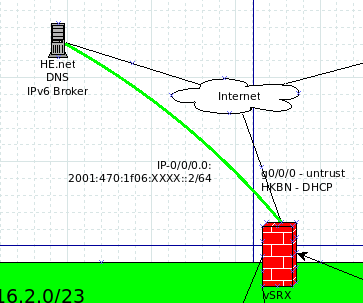
Continue reading
Tag Archives: JUNOS
MPLS VPN – option C – using bgp label exchange with cisco and Junos -part 1
It has been a while since I have done any labs after getting a new job. This time, I will be building a NNI option C using both Cisco IOS and Juniper MX. The reason I write this is because I do not find many resources on the internet about the inter AS connection using 2 different software at the same time. Hope this can be useful for anyone who is having the same struggle as i do.
(the AS# below are randomly picked!!)
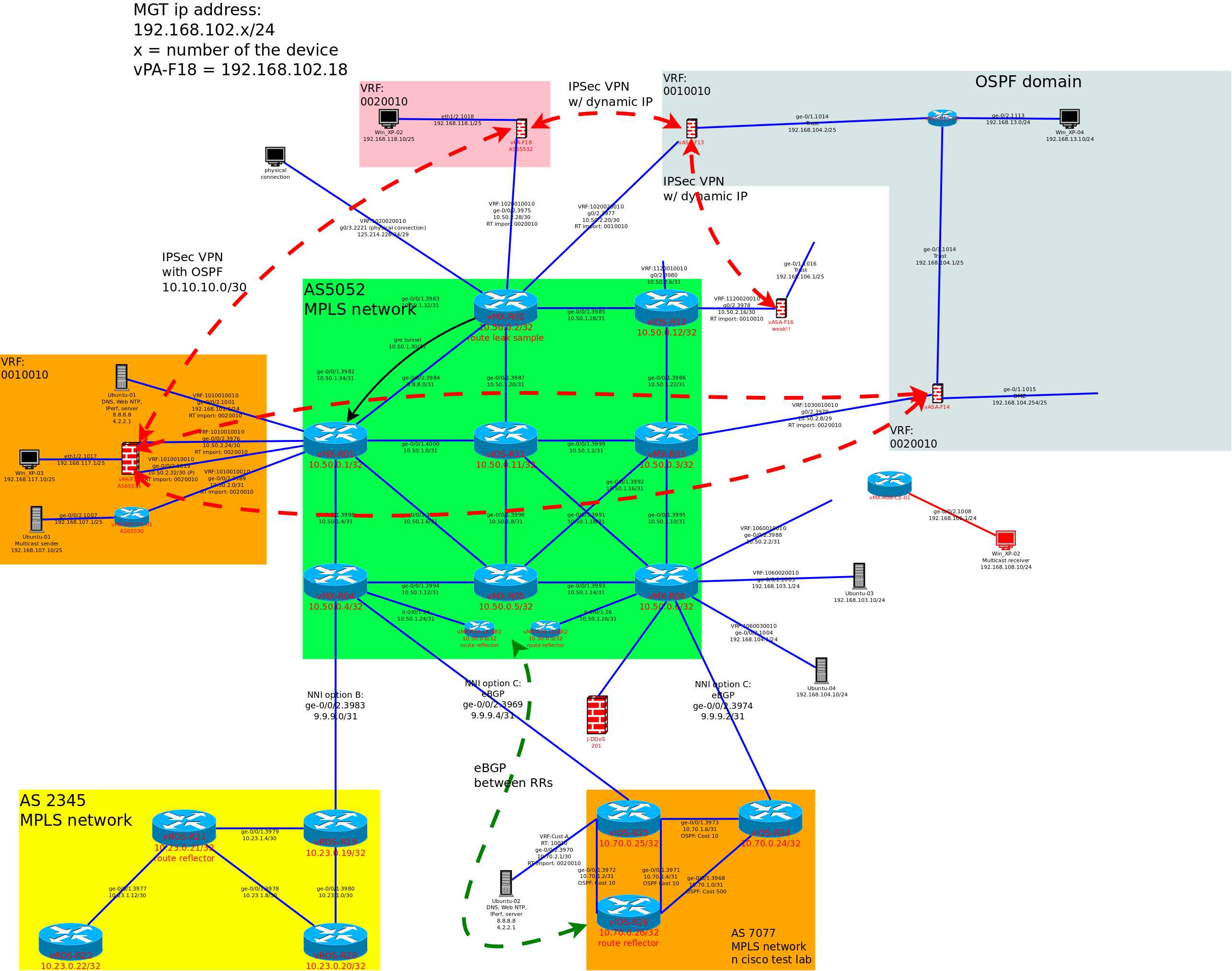
Based on the lab diagram (dont feel like copping it up), as the internal VPN service is already running and the intra AS is running OSPF and LDP for MPLS, I will be connecting AS5052 (the green aren in middle) and AS7077 (the orange area at the bottom) together over NNIs to extend the MPLS VPN services.
Continue reading
MPLS VPN – routes sharing between 2 different VRFs across the MPLS network
The beaut of MPLS VPN is to have multi tenants running over the same MPLS core network and each tenant are prevented to access other tenants networks. But what if the 2 different tenants want to connect to each other?
In the lab below, we have 2 different tenants and they are 1120020010 (RT:200010) in Router 12 and 1030010010 (RT:100010) in Router 03. By default, the ASAs connected to these VRFs cannot communicate since they are in 2 different VRF network. In this case, I will be using Cisco IOS and Juniper MX to let 2 different VRFs to connect together.
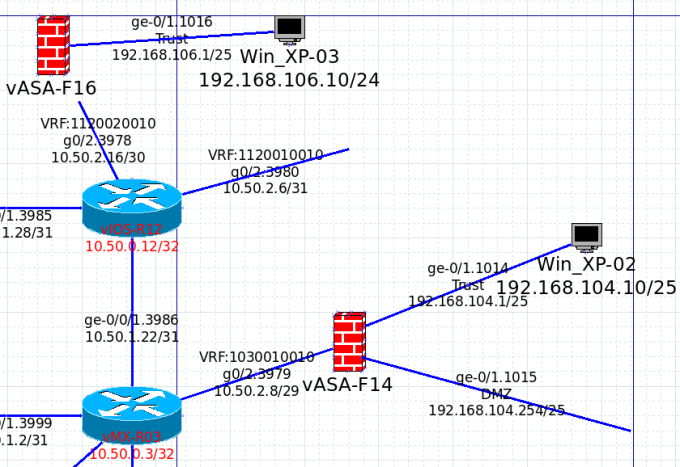
We could check the existing configuration and the route table in Router 03 and Router 12
Continue reading
MPLS – check the label switching path with Juniper Junos and Cisco IOS
How yall doing guys. It has been some times putting anything new to my blog. I think I will put some more materials that focus on troubleshooting wise stuffs. This time, I will present the way to check the label switching path or routing path of the MPLS VPN traffic that run on top of the OSPF and LDP protocols.
Here is the Topology. The lab is build with both Cisco IOS (C1000v) and JunOS. There is 2 subnets in the VRF which are 192.168.104.0/24 and 192.168.109.0/24 and they are located in the R3 and R10 respectively.

Continue reading
Traffic Engineering – MPLS
This time we will handle the basic traffic engineering within a MPLS network. This technique allows network admin to manipulate the traffic and fully utilize the subscribed bandwidth or circuits.
Traffic engineering within a MPLS network can be more accurate and convenience than in a typical TCP/IP network, because TE are happened at the MPLS level only, which would not affect the base of the whole network topology. If manipulate traffic at the IP level, everything running on top of IP level will be affected.
The network topology for this testing is listed below.
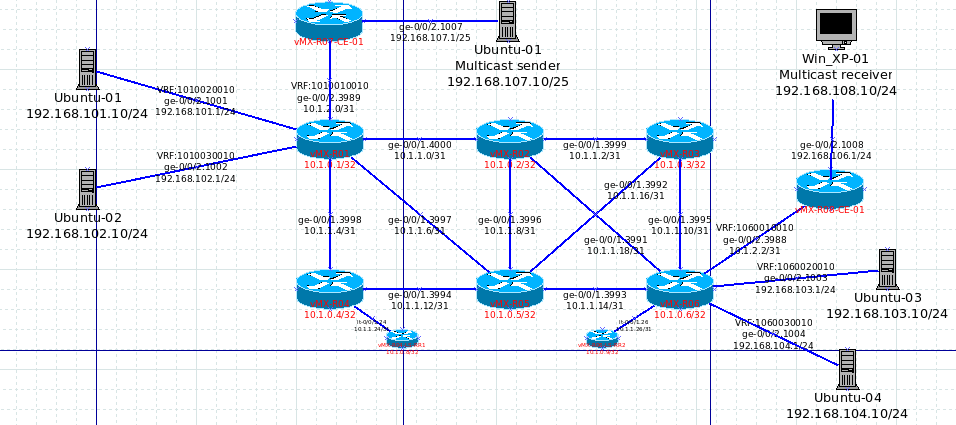
Continue reading
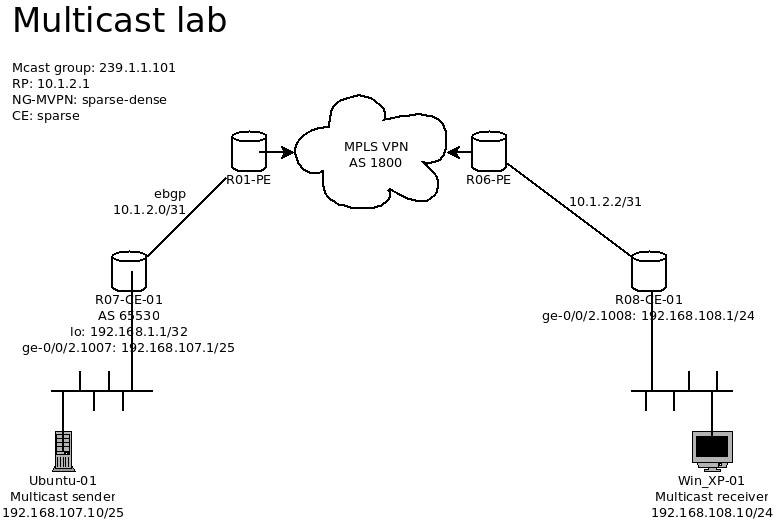
Playing with Multicast – Part 4 – NV-MVPN on Junos
It sure has been some times since the last multicast post. This time, we will put the lab into a higher level, and will be running the multicast on the MPLS VPN platform. Since this post is focusing on MCast only, the configuration for MPLS network will not be described with my detail. So let s dig in.

Continue reading
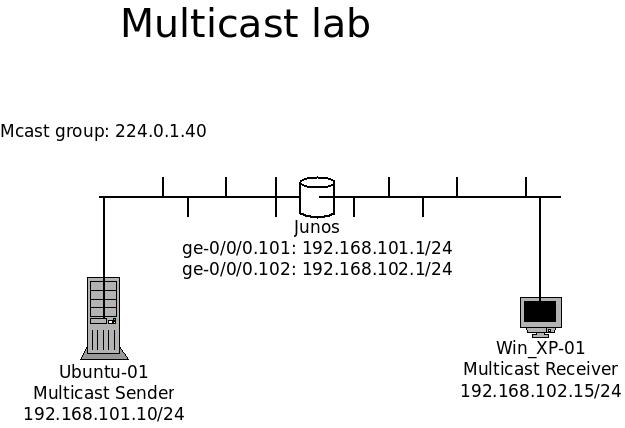
Playing with Multicast – Part 2.
The part 1 of multicast was simply doing the streaming within a local area network. This time, I will put my multicast lab to a level higher and put a router between the sender and receiver.
The test bed for this time will involve a simple routings. Please refer to the topology below.
To keep the multicast lab simple, it will be running on Sparse mode and using static RP instead of dynamic.
TOPOLOGY:

Components:
1x Ubuntus as sender
1x Windows XP as receiver.
1x Junos router Continue reading
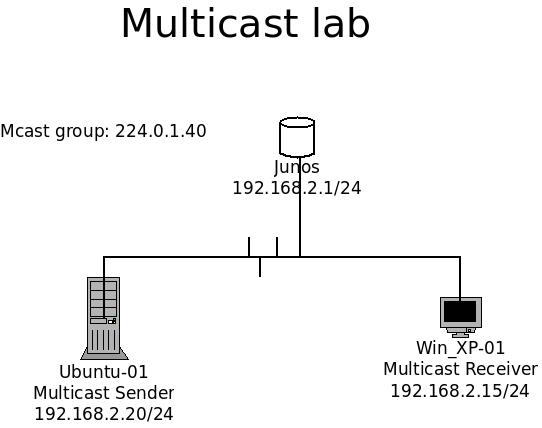
Playing with Multicast – Part 1.
It really has been a long time since my previous post. I have recently received a project that deal with multicast, a old technology that is really new to me.
I have been googling around for resources and references, and there are indeed a lot of results that mostly focus on theory. Therefore, I decided to contribute some of my hands on experiences for anyone who is building a similar lab as I do.
My lab builds from simple to complex (the difficulty is really based on my own experience only.) It starts from a playing multicast at a local area network and up to a MPLS VPN network.
Part 1 of the multicast post starts with 1x receiver and 1x sender in a local area network.
Part 2 of the multicast post is describes the lab with a router and one for each sender and receiver.
Part 3 of the multicast post is describes the lab with 3 routers and one for each sender and receiver.
(still organizing the information)
Part 4 of the multicast post is putting the lab from part 2 onto a MPLS VPN platform.
(still organizing the information)
Long story short, I will go straight to the part one deployment. The lab is simple; There is only 1 sender and 1 receiver within the same broadcast domain.
TOPOLOGY:

The Sender is an Ubuntu 14.04 32bit with updated components as of 2015 Dec,02. The receiver is a Win XP 32bit machine. Both of them are equipped with 512Mb of ram and 20G of hdd. Both machines are installed with VLC as for sending and receiving. There is a Junos device as their gateway, but it can be ignored for this lab since it does not have any PIM nor IGMP configured. Continue reading
Learning OSPF with one Juniper SRX100 (basic)
One of the beauties of Jumiper SRX is it has a heritage function from ScreenOS called “virtual router”. Unlike ScreenOS, Junos has the ability link virtual routers up with logical interfaces (lt-0/0/0). With these 2 features, Virtual routers could have their own route tables, could simulate several routers within a single box of SRX, and could run routing protocols between them. (I have tried with Cisco VRF, but it doesn’t work as expected.)
Continue reading